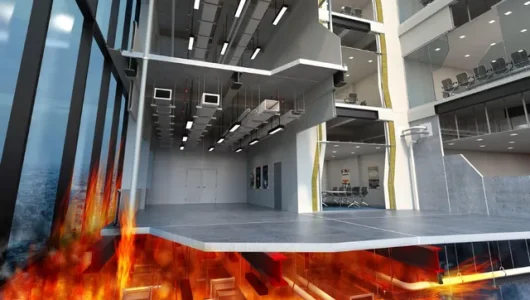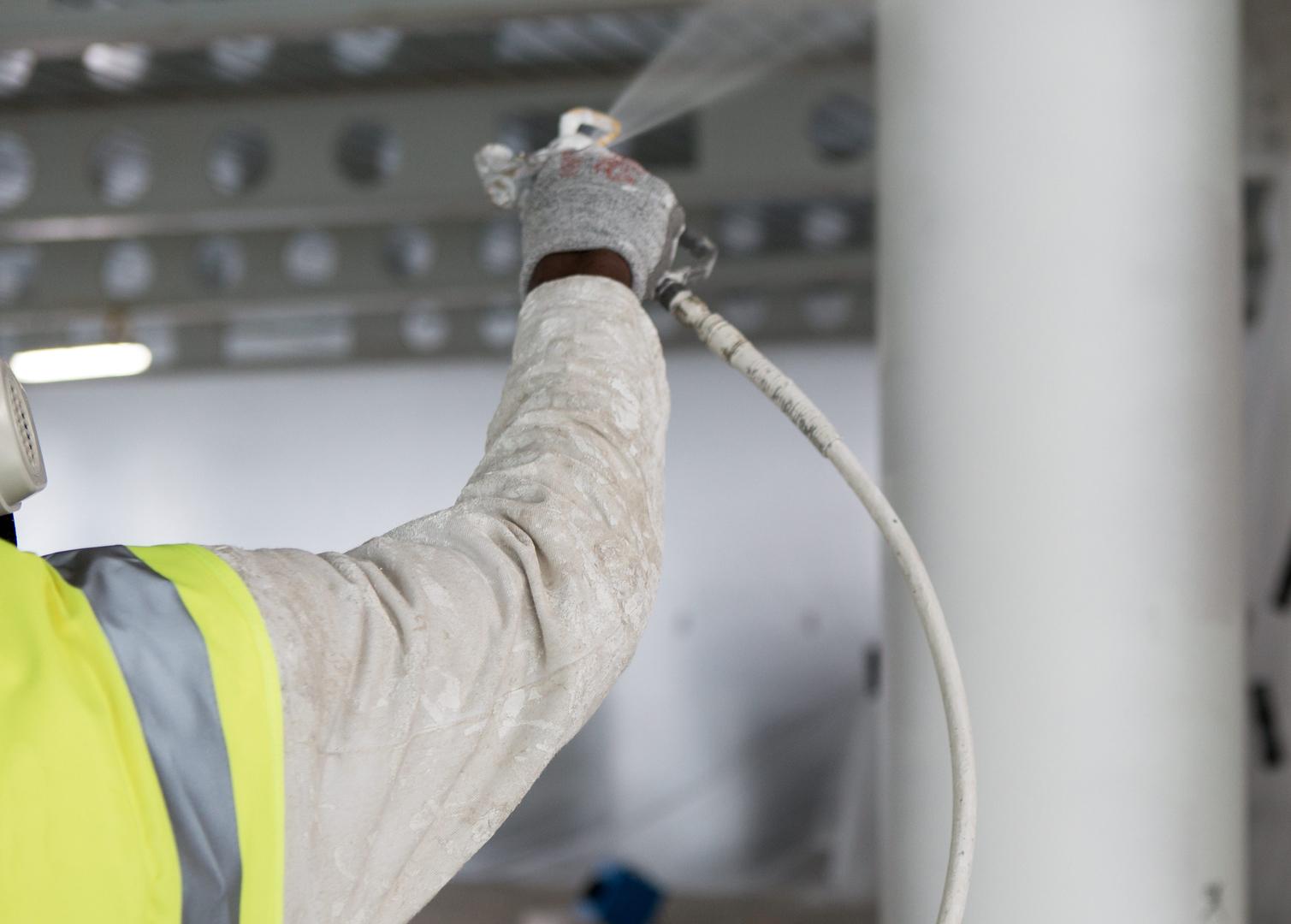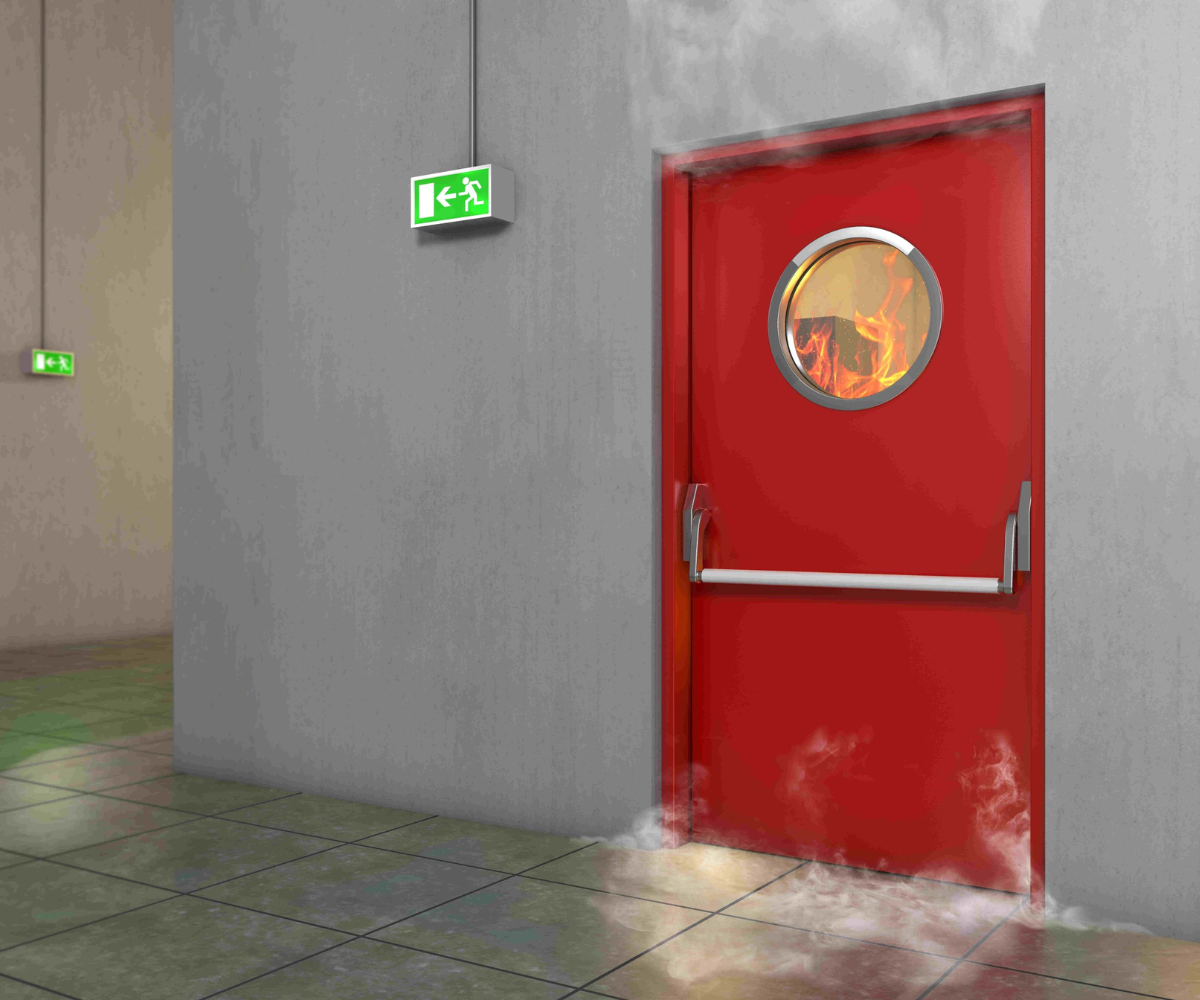Fire Door and Passive Fire Protection Systems
Passive fire protection systems help contain fires, allowing more time for evacuation. This service includes installing fire-rated doors, walls, ceilings, and barriers that prevent fire and smoke from spreading within a building.
- Site Evaluation & Design – Assess structural risks and determine required fire-resistant installations.
- Installation & Sealing – Install fire-rated doors, walls, and smoke barriers with proper sealing.
- Inspection & Certification – Perform fire resistance testing and issue compliance certifications.

- Fire-Resistant Walls & Doors
- Firestops & Penetration Seals
- Fire Protective Boarding & Column Encasement
- Compartmentalization
- Fire-Resistant Glass
- Fire-Resistant Coatings
What are passive fire protection systems?
Passive fire protection stands as a silent guardian, fortifying buildings against the destructive impacts of fire without the need for human intervention. They focus on the structural and material elements of a building to limit the spread of fire, smoke, and heat.
6 Examples of Passive Fire Protection
1. Fire-Resistant Walls & Doors
One of the fundamental elements of passive fire protection is the use of fire-resistant walls and doors. These structural components are constructed using materials designed to withstand the intense heat of a fire, thereby limiting its spread from one area of a building to another. Fire-resistant doors, equipped with specialised seals, play a vital role in compartmentalising fire and smoke, enhancing overall safety. This is why it is so vital that fire doors are kept closed at all times, something that is taught in fire safety training courses.
2. Firestops & Penetration Seals
Penetrations through walls and floors for pipes, cables, and ducts can provide a pathway for fire and smoke to travel. Passive fire protection includes the installation of firestops and penetration seals, which are designed to seal these openings and prevent the spread of flames and smoke. By effectively sealing these penetrations, the integrity of the building’s fire compartmentation is maintained.
3. Fire-Resistant Coatings
Structural elements such as steel and concrete can be vulnerable to high temperatures during a fire. Fire-resistant coatings are applied to these materials to enhance their ability to withstand heat and therefore act as a protective shield, slowing down the rate at which the structural elements lose their strength and integrity in the presence of flames. This therefore gives occupants increased time to evacuate the building.
4. Compartmentation
Compartmentation involves dividing a building into distinct compartments with fire-resistant barriers. These barriers hinder the lateral spread of fire, confining it to its point of origin. This containment strategy is critical in limiting the impact of a fire, protecting both lives and property.
5. Fire-Resistant Glazing
Windows and glass doors, if not properly protected, can pose a vulnerability in the face of a fire. Fire-resistant glazing is a passive fire protection measure that involves treating windows and glass surfaces with materials that maintain their integrity during a fire. This prevents the penetration of flames and smoke through these openings, contributing to a safer evacuation route and thus better fire safety.
6. Fire-Resistant Insulation
Incorporating fire-resistant insulation materials within the walls and ceilings of a building provides an additional layer of protection. These materials are designed to withstand high temperatures and prevent the rapid spread of fire through the building’s structure.



